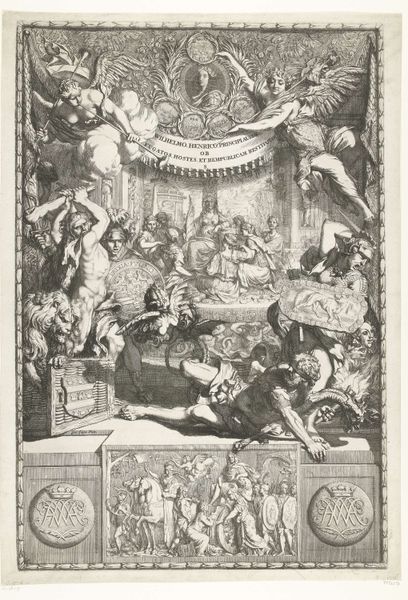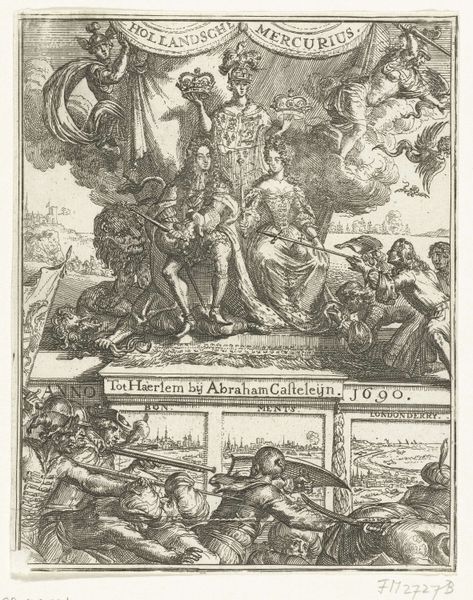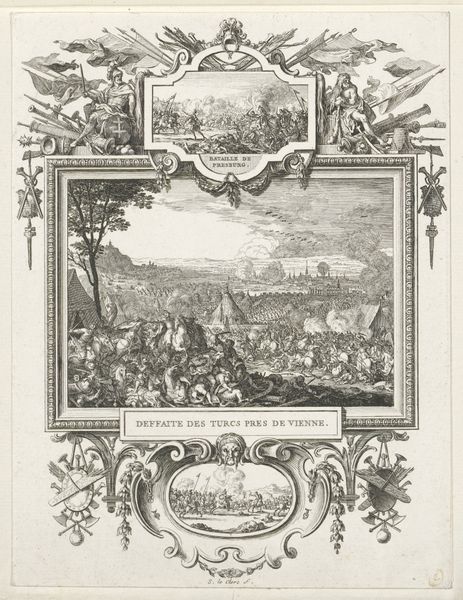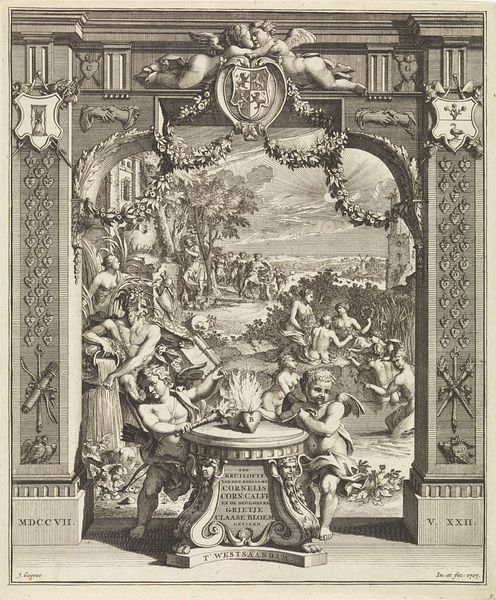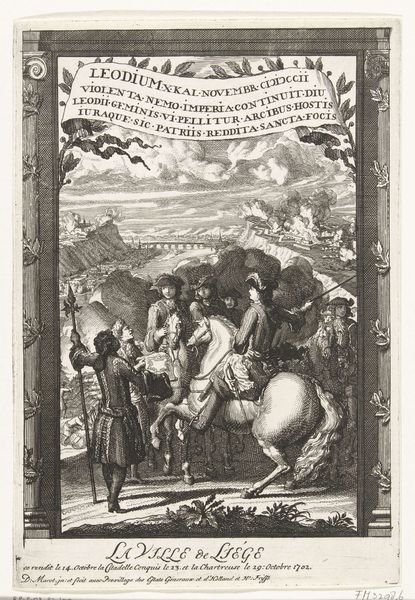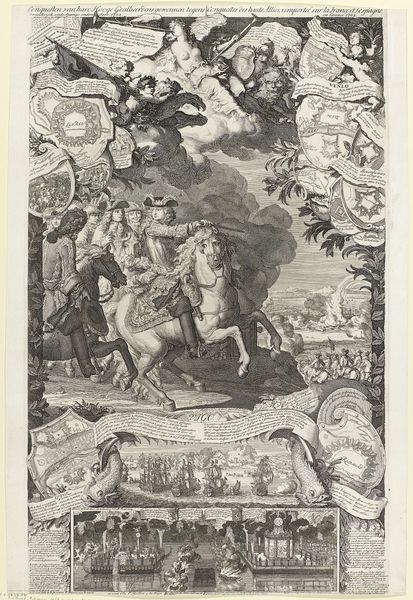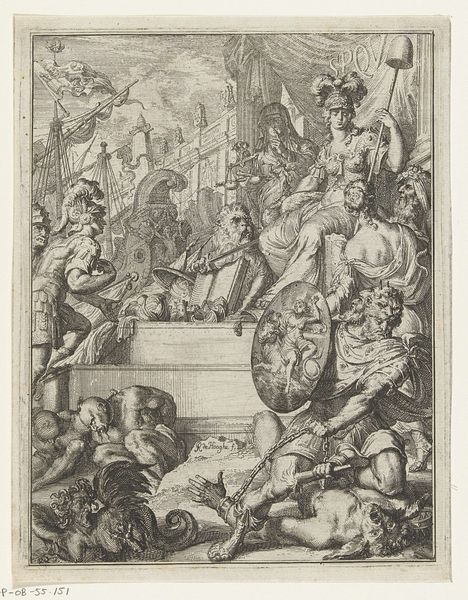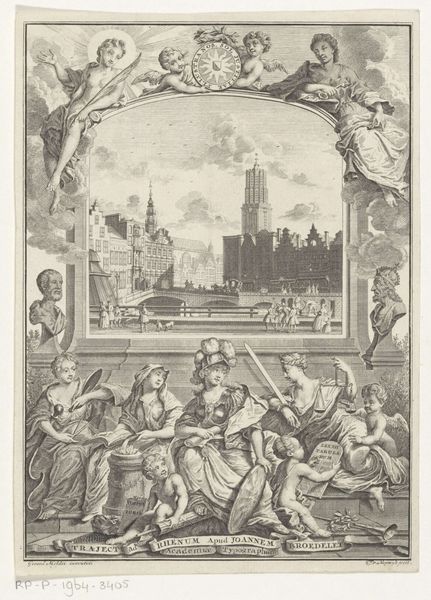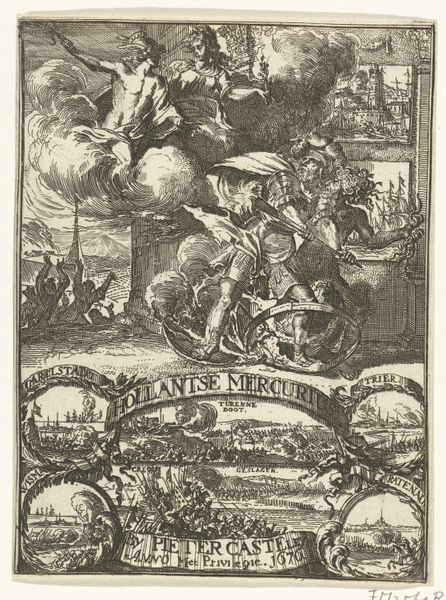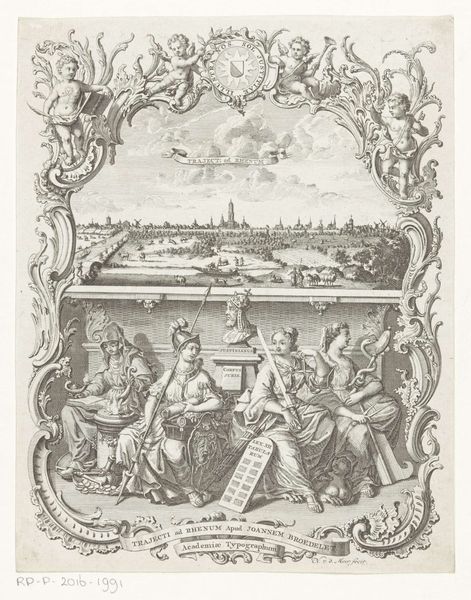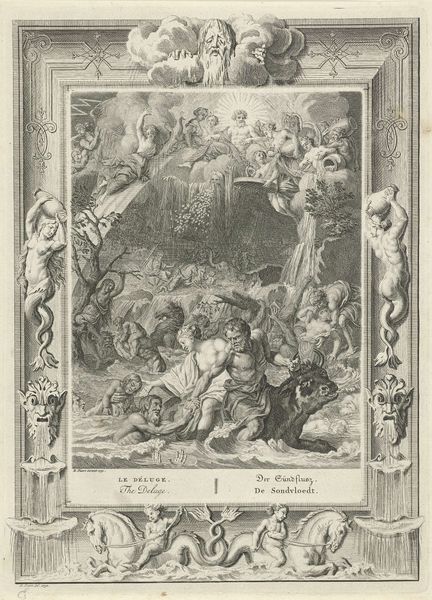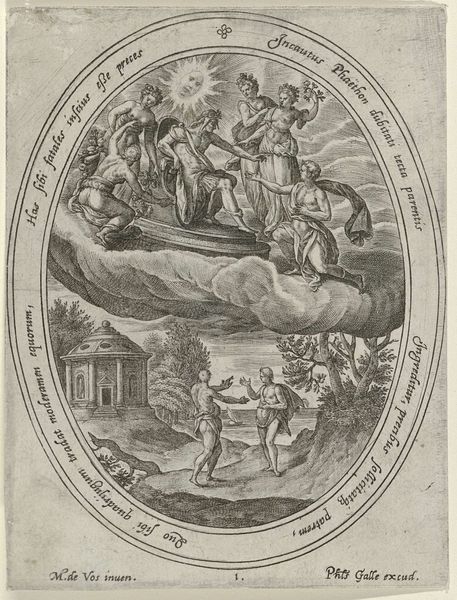
Titelprent voor Nederlantsche Oorloghen van Pieter Bor, 1621 1619 - 1621
0:00
0:00
anonymous
Rijksmuseum
print, engraving
#
allegory
#
narrative-art
#
baroque
# print
#
old engraving style
#
history-painting
#
engraving
Dimensions: height 169 mm, width 165 mm
Copyright: Rijks Museum: Open Domain
Editor: This is the title print for Pieter Bor's *Nederlantsche Oorloghen*, created between 1619 and 1621. It’s an engraving, held at the Rijksmuseum. The density of detail is overwhelming. What strikes you when you look at this piece? Curator: I immediately consider the materiality of this print. The fine lines, achieved through the engraver's meticulous labor, communicate power structures and control over information. It was printed *en masse*, offering insight into 17th-century production and distribution of political narratives, particularly regarding the Eighty Years' War. Editor: So, you’re saying the very act of creating multiples underscores its political purpose? Curator: Precisely. The material act of producing and disseminating these images participates in the construction of national identity. Notice how symbols like scales of justice are being overturned; capital literally being smashed by the soldier. How are these processes affecting the Dutch population, their access to resources, their livelihoods? Editor: That makes me think about the actual physical labor involved in creating the printing plate. I hadn't considered how much work went into mass-producing political messaging. Curator: Absolutely. The choice of print as a medium also speaks volumes about accessibility and control within the existing economic and technological constraints. It questions high art production in favor of popular distribution of narratives that directly influence public discourse. We could ask what the relationship between the printmakers and Bor himself was: whose interests were really served by producing this narrative? Editor: I see your point! I was focused on the allegory, but thinking about its creation, how it circulated, and its consumption definitely adds another layer of interpretation. It really transforms how I view it. Curator: Indeed. Materiality provides context, allowing us to rethink assumptions around artistic intention, value, and impact within a society.
Comments
No comments
Be the first to comment and join the conversation on the ultimate creative platform.
